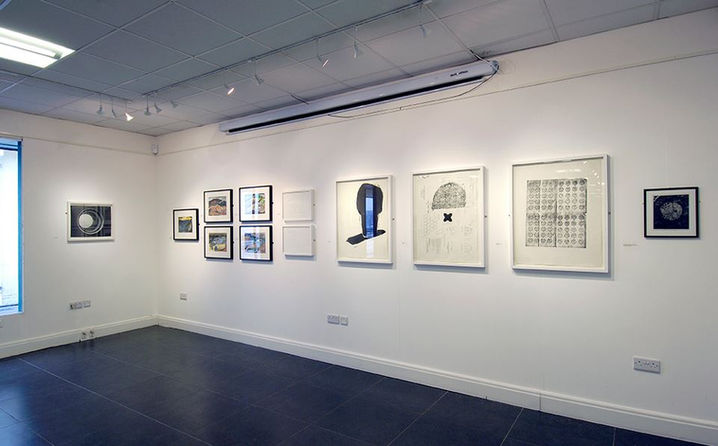
Points of Departure
Points of Departure was exhibited at the Sayle Gallery, Isle of Man: March 4th - April 3rd 2016. The exhibition featured forty artworks including paintings, printmaking and photography. The works which span thirty years examine ideas of place shaped by a return to that which is familiar counterpointed by journeys undertaken by the artist, which generate new experiences and encounters. A process of repositioning at a distance takes place where existing works are reconfigured as they are drawn into proximity with new works, which embody the experience of their making. The exhibition also included the use of found images as well as prints on loan from the Grosvenor Museum and Art Gallery, Chester.
‘Points of Departure’ at the Sayle Gallery was the second iteration of a collection of works, which were first exhibited at the Grosvenor Art Gallery and Museum in Chester (Oct 2014 to Jan 2015). At the Grosvenor, Keeper of Art Peter Boughton had been keen for the exhibition to include paintings and printmaking alongside Quayle’s photography and video work. The pieces exhibited took the form of a survey which spans works made across the last thirty years.. Quayle has long made work about his place of origin, the Isle of Man. A set of preoccupations related to identity, concepts of home, other places lived and the journeys in-between are galvanised in a practice which Rob Flint has observed are defined by “two themes: a preoccupation with travel as an identifying activity, and the construction of personal symbolic systems from found materials” (Rob Flint, Return Ticket, 2003). Quayle’s turn to photography and its material presence as an indexical trace and image also carries within it strategies related to finding and collecting. This, in the same way that painting and printmaking served as a vehicle for the same concerns manifest in a situatedness based on encounters with the vernacular, found materials and things, and what Thomas Crow has described as: ‘the used up vestiges of landscape leisure and architecture at the end of the twentieth century’.
This exhibited artworks are linked by an arbitrary and contingent movement between one place and another, strategies of repetition and return, and the spaces of transition in between, which lead to elsewhere. Specific works also investigate the cinematic space of the city and the habitual navigation of everyday sites of habitation, work, retail and leisure. A series of lightbox artworks and large black and white photographs (re)discovered locations, which are crystallised in a defining moment which Roland Barthes termed the filmic. These works juxtapose the everyday spaces of habitation, work, retail and leisure alongside others which reference the films of Michelangelo Antonioni (Blow Up, 1966) and Stanley Kubrick (Clockwork Orange, 1971).












